Introduction: Why Sofa-to-Room Proportions Matter
Choosing the right sofa size is one of the most important decisions in furniture shopping. A sofa that's too large can overwhelm your space, while one that's too small may look out of place and fail to provide comfortable seating. Getting the proportions right ensures your living room feels balanced, functional, and visually appealing.
Key Fact:
According to interior design experts, the sofa should occupy no more than two-thirds of the wall it's placed against to maintain proper room balance and traffic flow.
Step-by-Step Measurement Guide
Follow this systematic approach to measure your space and determine the ideal sofa dimensions for your room.
Step 1: Measure Your Room Dimensions
Start by taking accurate measurements of your entire room:
- Length and Width: Measure wall-to-wall in both directions
- Ceiling Height: Note any low ceilings or beams
- Window and Door Openings: Measure their positions and sizes
- Architectural Features: Note fireplaces, columns, or built-ins
📐 Essential Tools for Measuring
- Measuring tape (25-foot recommended)
- Notebook and pen for recording measurements
- Graph paper or room planning app
- Camera to document the space
Step 2: Define Sofa Placement Area
Identify where your sofa will be positioned and measure that specific area:
📍 Against a Wall
Measure the wall length where the sofa will sit. Leave 6-12 inches of wall space on each end for visual balance.
🛋️ Floating in Room
Define the area with painter's tape on the floor to visualize the sofa's footprint before purchasing.
Step 3: Plan Ideal Spacing Between Furniture
Proper spacing ensures comfortable movement and conversation areas:
Walking Pathways
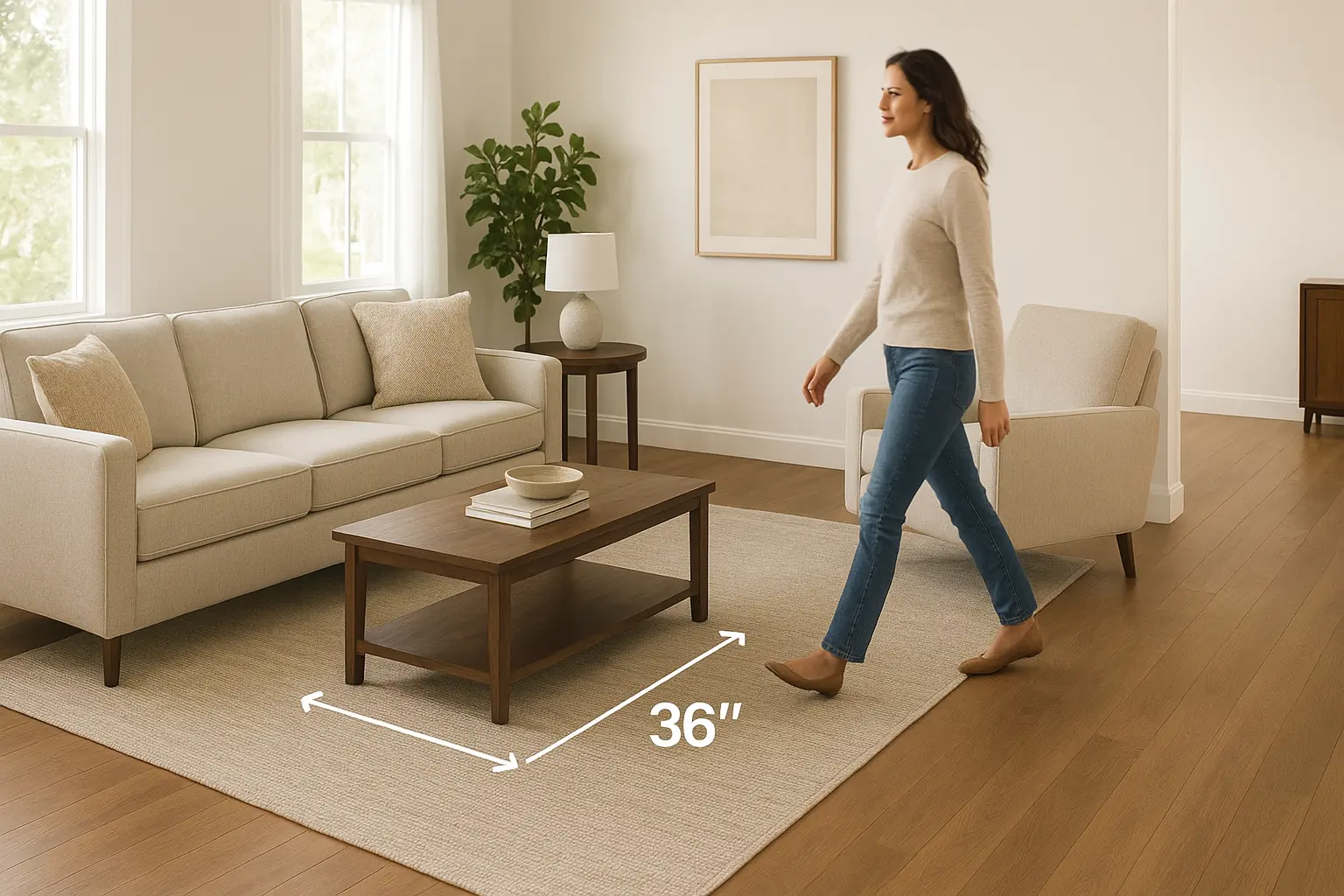
Maintain at least 36 inches (3 feet) of clearance for main walkways and 24 inches for secondary pathways.
- Main traffic routes: 36-48 inches
- Between furniture pieces: 18-24 inches
- In front of entertainment units: 42-48 inches
Conversation Areas
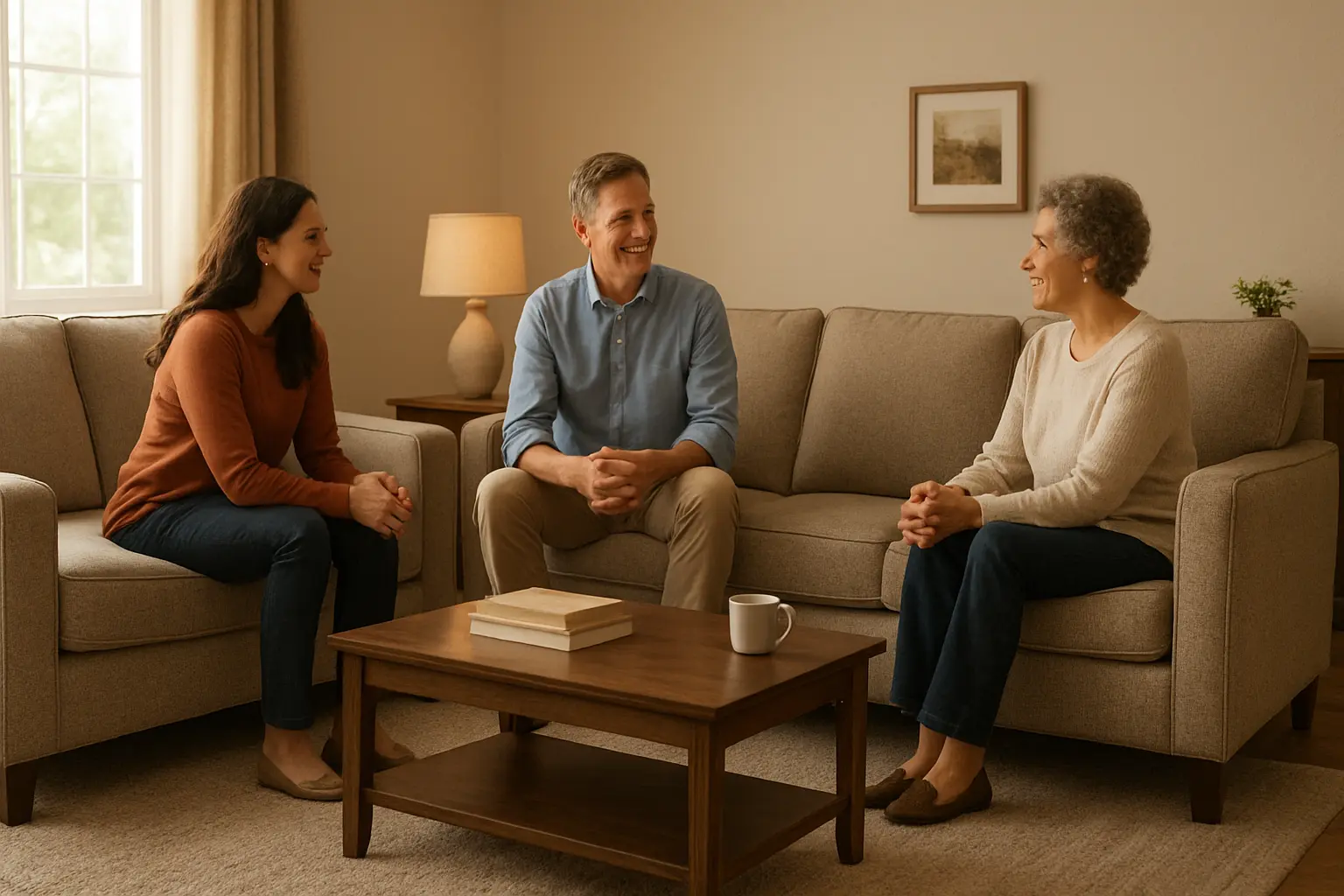
Position seating 6-10 feet apart for comfortable conversation. Closer than 6 feet feels cramped, farther than 10 feet discourages interaction.
- Intimate seating: 6-8 feet apart
- Standard living room: 8-10 feet apart
- Large spaces: 10-12 feet maximum
Standard Sofa Dimensions Guide
Understanding standard sofa sizes helps you make informed decisions:
Standard Sofa Size Reference
| Sofa Type | Width Range | Depth Range | Height Range |
|---|---|---|---|
| 2-Seater Sofa | 55-65 inches | 32-38 inches | 30-36 inches |
| 3-Seater Sofa | 75-90 inches | 34-40 inches | 32-38 inches |
| L-Shaped Sectional | 90-120 inches | 60-90 inches | 32-38 inches |
| Apartment Sofa | 60-75 inches | 30-35 inches | 30-34 inches |
Layout Tips for Different Room Sizes
🏠 Small Rooms (Under 12x12 feet)
- Choose apartment-sized sofas (60-75 inches wide)
- Consider armless designs to save space
- Use leggy sofas to create visual openness
- Opt for light colors to make space feel larger
- Consider a loveseat instead of full sofa
🏢 Large Rooms (Over 15x15 feet)
- Use larger sectionals or multiple seating groups
- Consider a chaise lounge for additional seating
- Add substantial side tables and lighting
- Use area rugs to define the seating area
- Consider symmetrical sofa arrangements
Common Measurement Mistakes to Avoid
- Forgetting to account for door swings and traffic flow
- Not considering ceiling height with tall sofas
- Ignoring the space needed for reclining mechanisms
- Forgetting to measure hallway and staircase access
- Not accounting for throw pillows that add depth
Visual Layout Examples
See how different sofa sizes work in various room configurations:
Open Concept Living Room
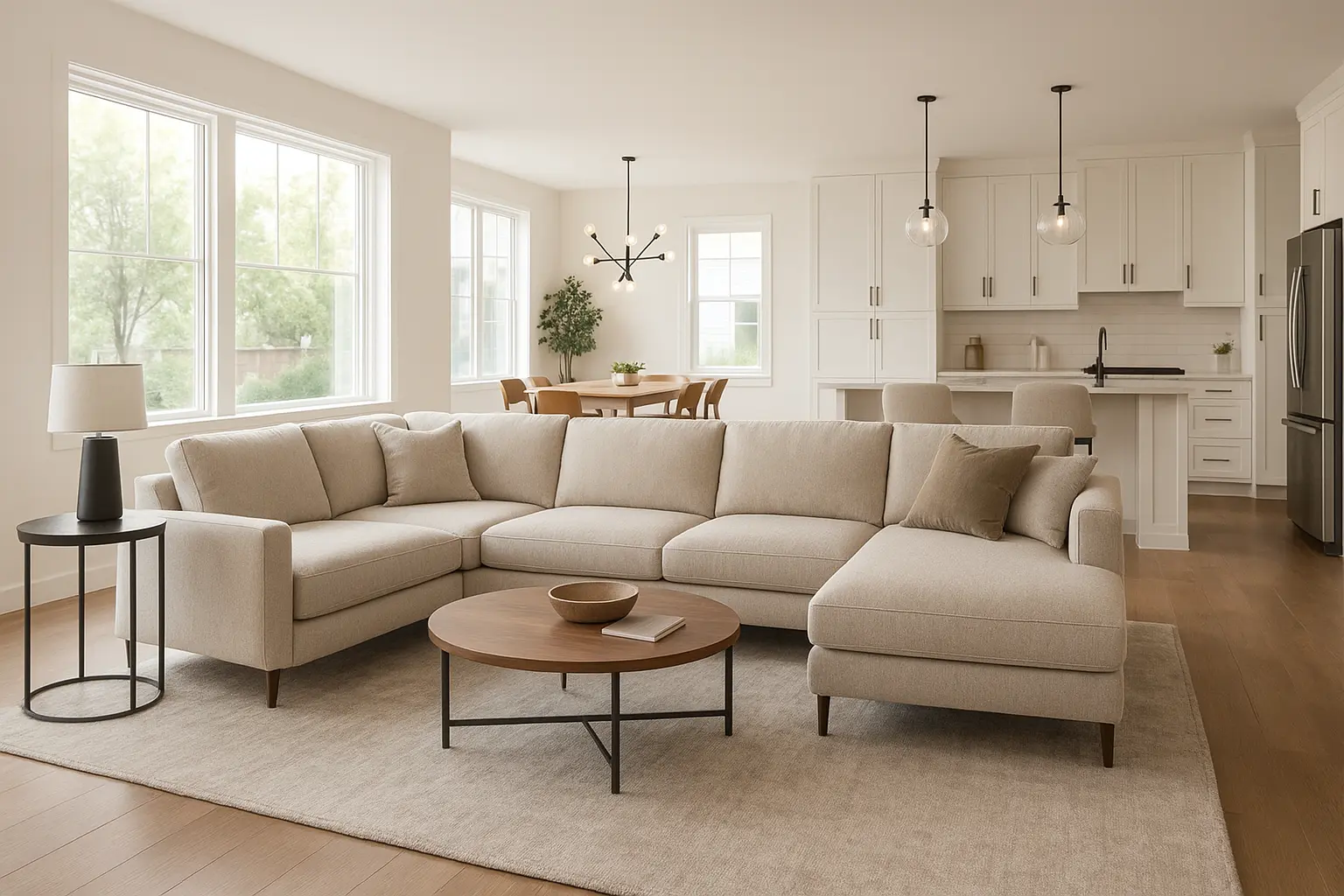
In open floor plans, use area rugs and furniture placement to define the living area without walls.
Rectangular Room Layout
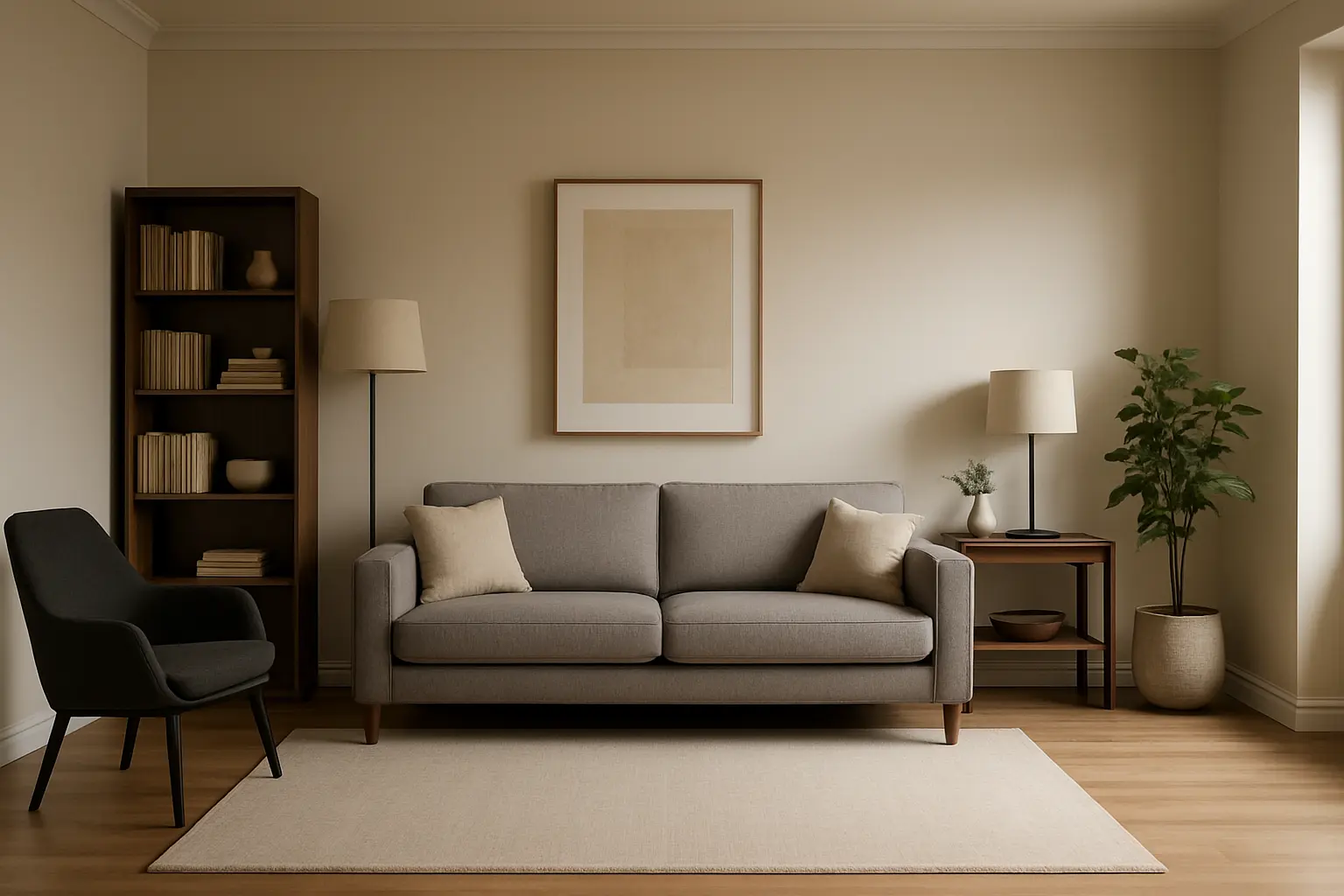
For rectangular rooms, place the sofa on the longer wall and use the remaining space for complementary furniture.
Conclusion: Finding Your Perfect Fit
Choosing the right sofa size requires careful measurement, consideration of traffic flow, and understanding of standard dimensions. Remember that the perfect sofa not only fits your space physically but also complements your lifestyle and design aesthetic.
Key Takeaways:
- Always measure your space before shopping
- Consider both the sofa dimensions and required clearance
- Think about how you use the space daily
- Don't forget delivery access measurements
- When in doubt, go slightly smaller rather than larger
Ready to Find Your Perfect Sofa?
Explore our collection of sofas in various sizes and styles. Use our sofa bed options for maximum space efficiency in smaller rooms.
Browse Sofa Bed CollectionMore Helpful Sofa Buying Guides
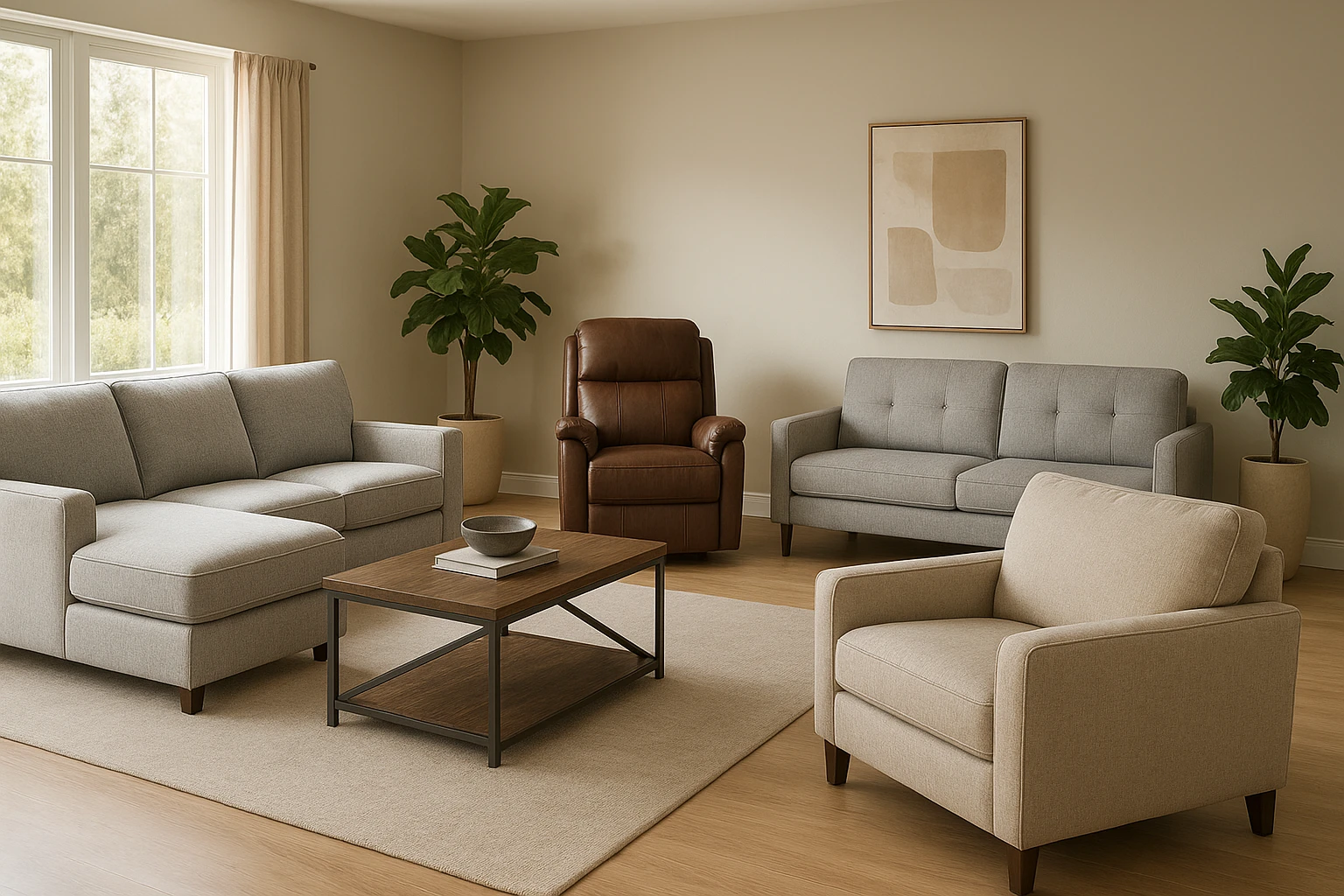
Discover various sofa styles from sectionals to loveseats and find which type suits your needs.
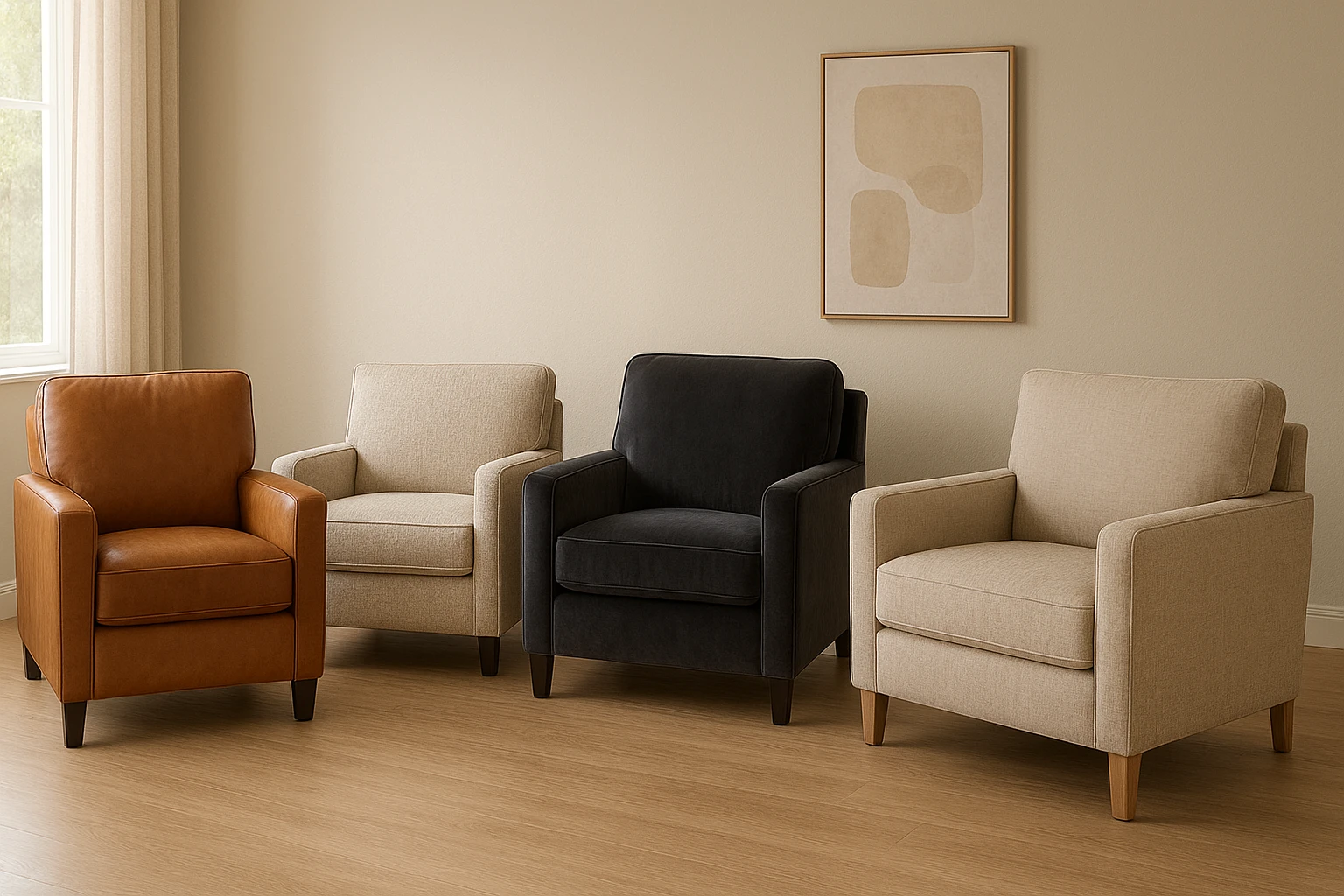
Compare durability, comfort, and maintenance of different sofa upholstery materials.
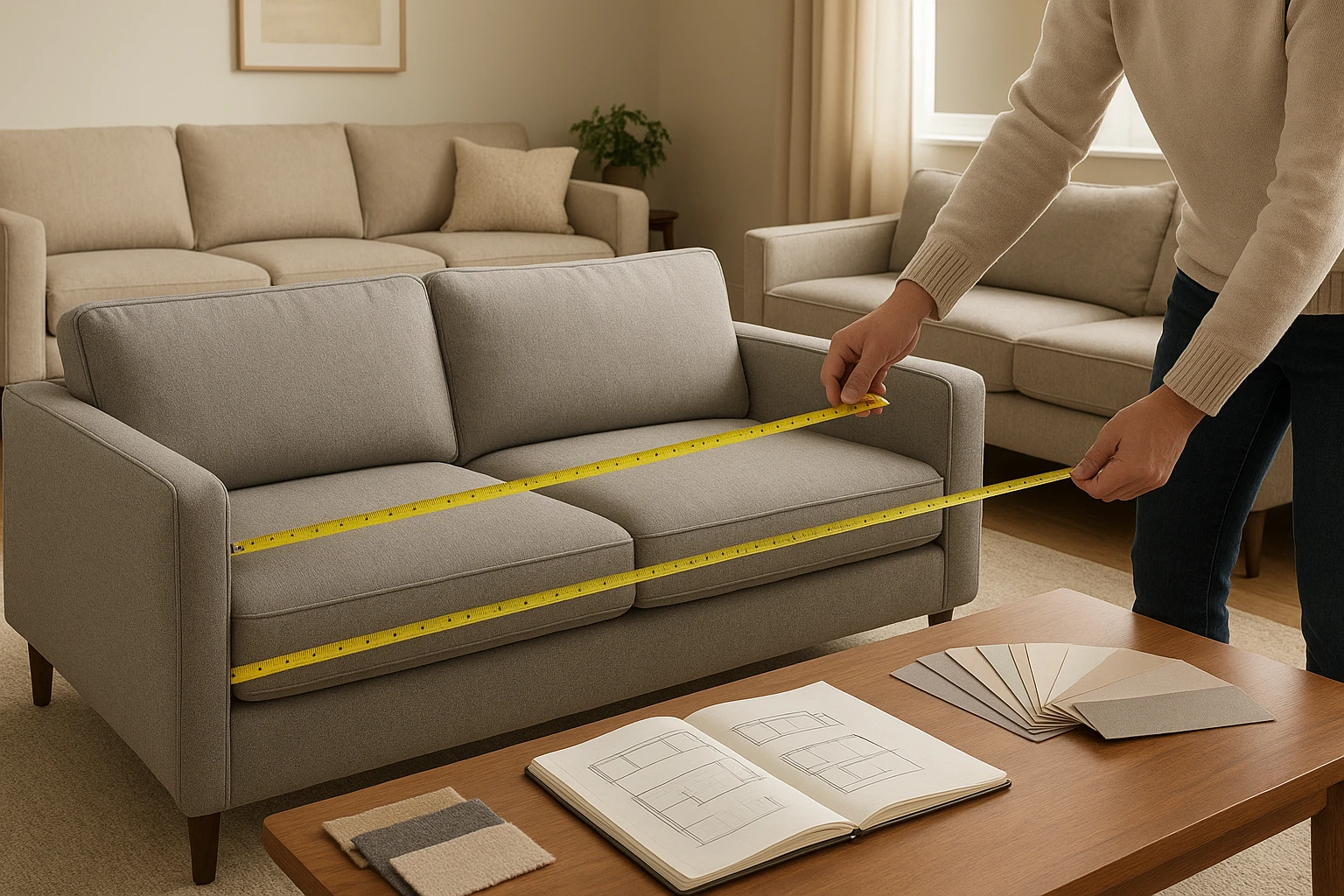
Everything you need to know about selecting the perfect sofa for your home and lifestyle.
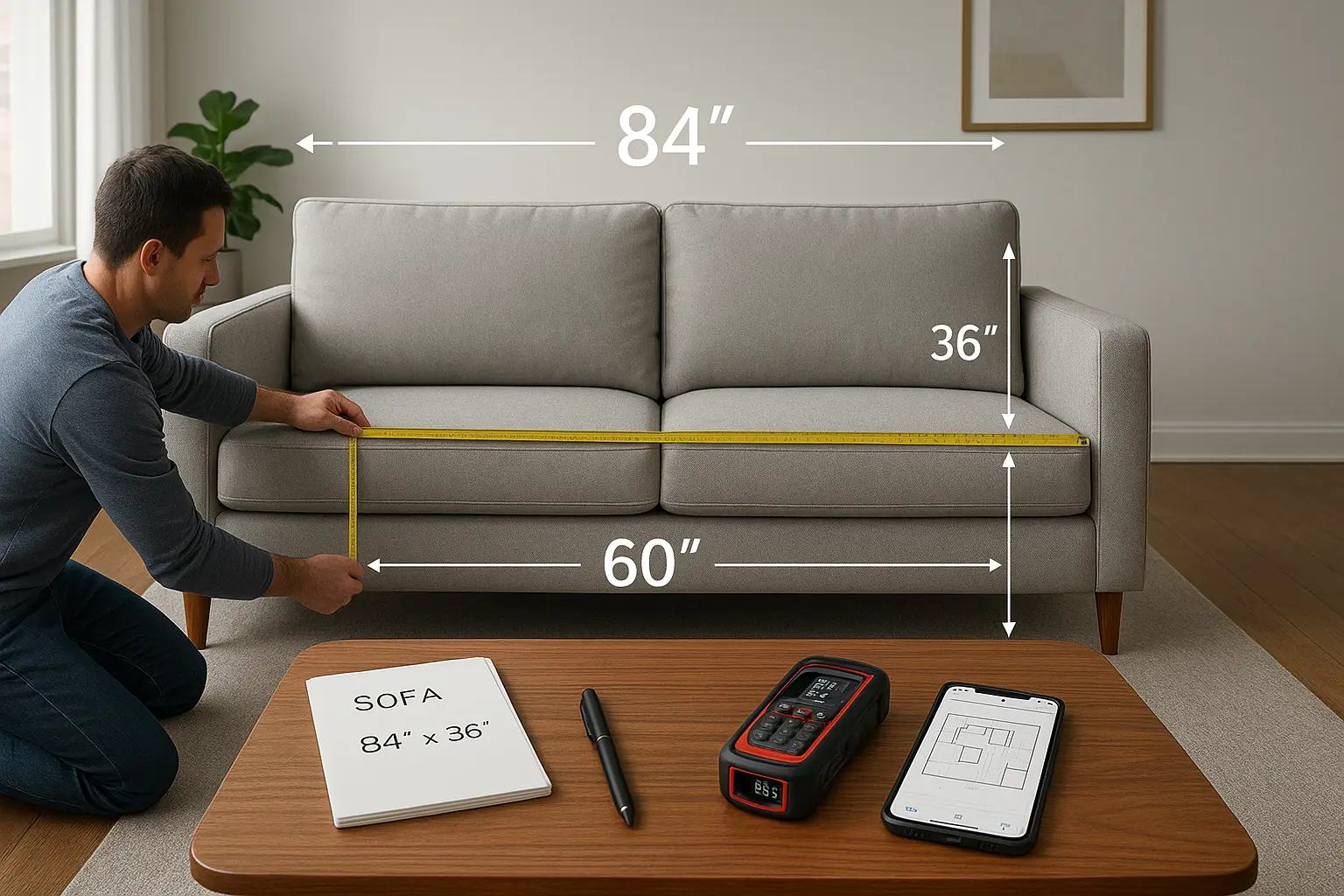
Learn how to measure your room and select the ideal sofa dimensions (you are here).
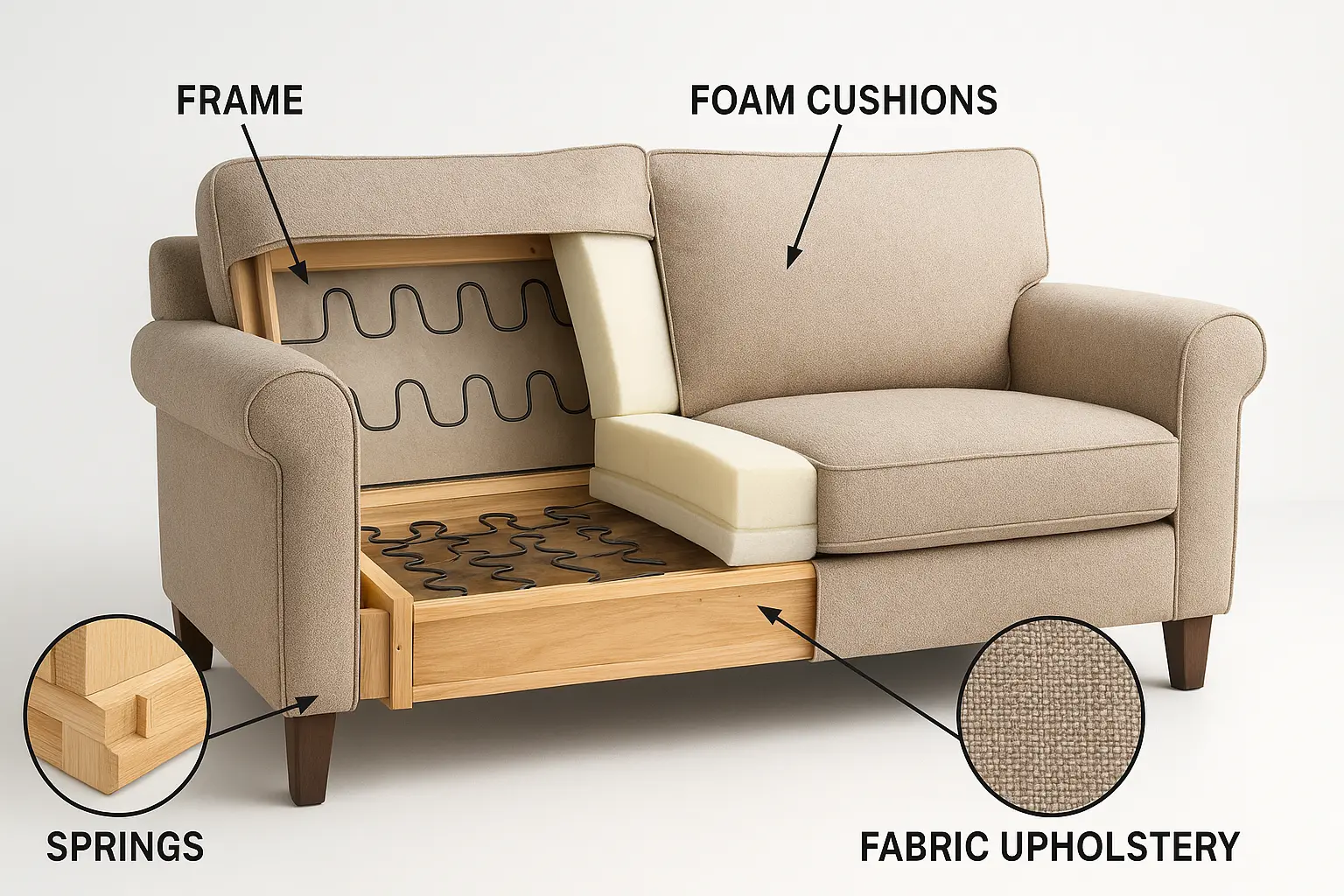
Understand sofa construction quality and what makes a durable, comfortable sofa.

Essential advice for purchasing sofas online and ensuring you get exactly what you expect.
Join the Discussion
Share your thoughts or ask questions about this article
No comments yet. Be the first to start the discussion!











 Link copied successfully!
Link copied successfully!